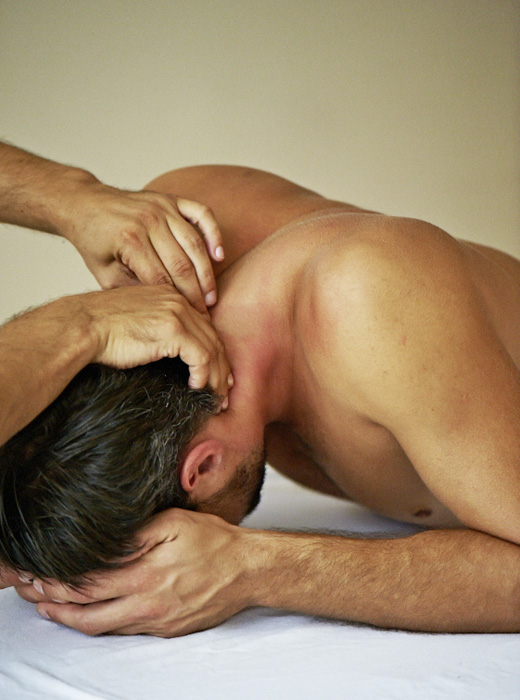
Pain is a complex phenomena, it can be a lot of things. Usually people distinguish between physical pain and emotional pain. From the perspective of the body and how we experience it, there isn’t really such a great difference. But lets start from describing where we usually know it from and how we get to know pain in our lives.
We know pain e.g. as a signal that we get when we squeeze our thumb in the door or when we fell down and we bleed. Usually, if we give the body the right conditions, it will deal with these pains more or less well and we are not really busy with it any longer.
Other pain, many of them chonicle, accumulates over time, due to certain repeating efforts in the body. We know them at some point in our lives: neck-pain, backpain, headaches. For example, we work at the computer and after some time, we develope some pain symptoms.
We live our lives and sooner or later we end up noticing that our bodies hurt, we hurt. And then some of these pains stay chronicle – because we stay in the routines that keep them alive.
Dealing with pain
The training that I offer aims on regaining enough attention about these specific routines so we can stop these pains. To some degree you could also say, to transform the pain and to increase your well-being by doing so.
How-to
In order to do this, we bring a lot of attention to the area. My clients are laying on my working table and I let them breath a lot towards the given area and they can take time to get an impression of the area itself and also all the conntected areas around the pain. With verbal instructions and with my hands, I am guiding their attention to the given areas. My teaching is adressing several topics regarding the pain and how we usually relate towards it.
Usually we do many different things to „Not-feel“ the pain, e.g. we breath less, we like to ignore it by going somewehre else with our attention, or we „cut-off“ or squeeze the whole area in an attempt to not feel it. So this is my job: to teach them how they individually deal with pain. The more my clients get a „first hand“ idea and sensation of their body and how they deal with it, we can apply different techniques in order to address the pain itself. All this always involves a lot of breathing and usually the healing process already starts just by bringing attention to the area. Painful muscles can release step-by-step and release the involved energy, which can sometimes come with the experience of heat or cold or tickling and so on. Usually all the energy – on a mental level- involved to „not-feel“ the pain is released simultaneously – you might know the relaxation after letting go of some pain already. Only then we notice, how much the pain kept us busy.
The routines behind the pain
Some pains tend to appear again and again because there are certain individual routines behind the pain. E.g. when we sit at the computer on a wrong chair, this might create pains. Maybe the intensity, fear or excitement of our work is so big that we contract in certain areas in an attempt „not-to-feel“ and this will create some pain. (Same might be right for not wanting to feel that we are bored or even disgusted by our work.) It might be interesting for your to know, that one of our most used techniques in order to “not-feel” is to make the whole area completely “disappear”. The client will suddenly notice in the sessions and with my hands as guides, that he hasn’t got a sensation at all in a certain area. Or that it feels as if the area belongs to some one else. (!?)
In the sessions I will look at the whole life situation and will address these issues individually to make the learning sustainable for my clients. In some cases I will have to teach them how to deal will fear, excitement and other emotions in order to get rid off the pain on the long run. It might also involve to make some more or less big changes in their lifes in order for pains to really disappear.
History and personal trauma as a source of pain
For the body, emotional pain or pain from traumatic events are just the same. These complex phenomena need to be addressed at times, as the underlying pain still keeps us busy – and the attempt „not-to-feel“ this “old” pains might create other, more physical, “new” pain. Often clients come to me with some more physical pain and then later on, we discover, that these pains actually appeared as they experiences some traumatic situations, where they e.g. weren’t able to deal with a great amount of pain or fear. In this case it is necessary to address these events in the sessions, so the the „old“ pain can be fully experienced. Only then they can also can learn to let-go of the “new pain”.
What I wanted to show in this post, is that pain is part of the human experience on many levels and it makes sense to stop our attempts to ignore or „not-to-fell“ it in order for our body and souls to heal.
If we learn to do this, instead of rejecting or ideologizing it (be tough!), it can become something that can help us to integrate experiences and to develope a much deeper understanding about ourself and others – and also about life itself.